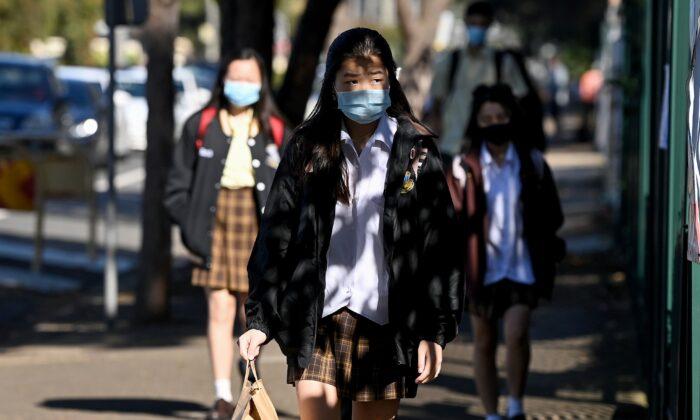High school students and all staff in WA will be required to wear masks upon returning to class, with all 900 public education facilities now retrofitted with a total 12,000 high-efficiency particulate air (HEPA) air purifiers and 1,500 carbon dioxide (CO2) monitors.
Mask requirements for students in WA follow similar measures implemented in Victoria this week, but which was already a requirement in New South Wales in October.
Masks will also need to be worn by primary school children in Year 3 and above if the state experiences a spike in Omicron cases.
In addition to air filters, enhanced cleaning services, and access to masks and hand sanitiser, WA’s “Safe Return to School Plan” requires all staff to submit their proof of vaccination before Jan. 31.
The Epoch Times reached out to the WA Department of Education who were unable to provide the number of staff yet to submit their proof of vaccination.
WA Education Minister Sue Ellery said the state was doing its best to keep schools open, including a pool of more than 5,000 fully vaccinated casual teachers available on standby.

“Schools have contingency plans in place to minimise disruption to student learning, including hardcopy learning packages, access to online learning resources and arrangements to temporarily replace teachers and other school staff required to isolate due to COVID-19.”
WA Premier Mark McGowan has outlined he believes that vaccination was key in helping fight the Omicron variant.
“Vaccinations for staff are vital to help ensure the safety of their colleagues and students, and to allow student learning to continue,” McGowan said.
While students have not been specifically required to be vaccinated, WA has put pressure on children to get vaccinated in order to reach its 90 percent target and made it easier to do so, including opening up vaccination clinics within schools and bussing students to state-run vaccination clinics.

“It’s also important students get vaccinated,” McGowan said. “Vaccines are safe and effective—and offer the best protection for our children.”
However, there is currently no international consensus on whether children need to be vaccinated as children, on average, have recorded low rates of illness and death from COVID-19.
Malone noted that while children can effectively clear out the vaccine from their bodies there was also a very small chance of them dying from COVID-19 with the majority of COVID-19 deaths being kids who were already suffering from underlying or chronic diseases.
He said that with regard to the chance of myocarditis, or inflammation of the heart, “there’s a good chance that if your child takes the vaccine, they won’t be damaged, they won’t show clinical symptoms.”





